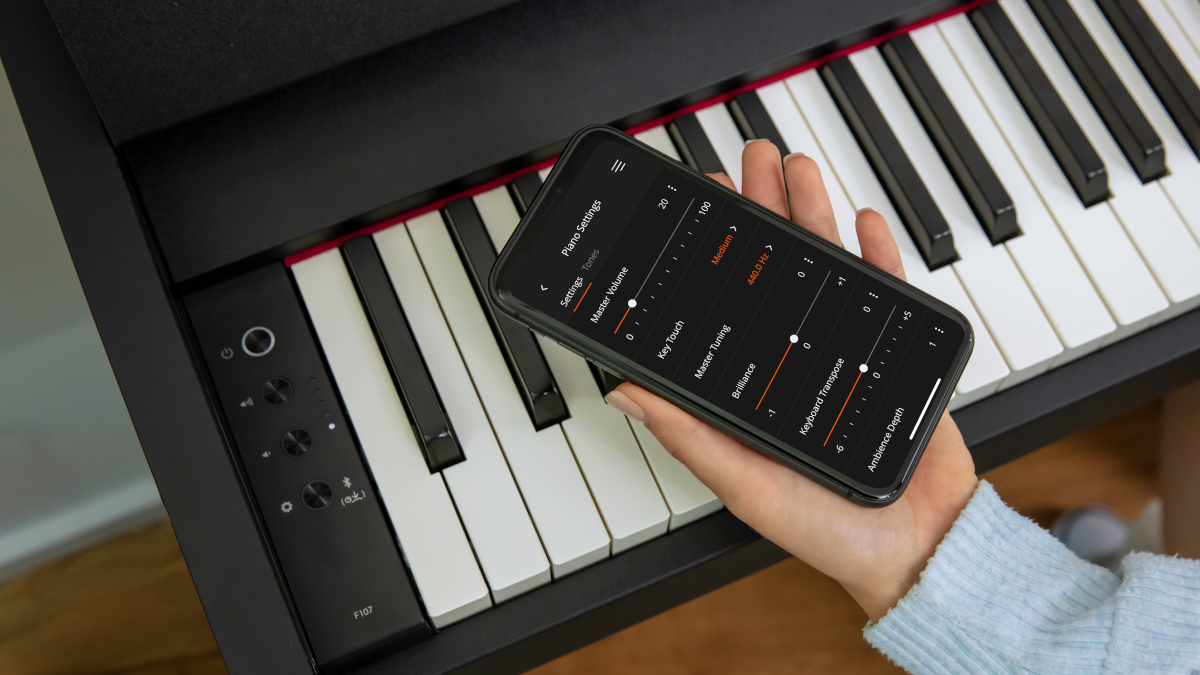Roland’s F107 and RP107 digital pianos promise to bring high-end sound and playability to the entry level
Slimline instruments take feature and design cues from more expensive models

The entry-level digital piano market is fiercely competitive, so would-be purchasers should be all ears when Roland says that, with its new F107 and RP107 models, it’s bringing “a new level of performance” to the category.
The focus here is on the two key areas of playability and sound. Both models feature Roland’s SuperNATURAL Piano engine, which combines sampling and modelling to emulate a real grand piano, and an 88-note PHA-4 keyboard that’s said to deliver “true weighted response”. Sustain, soft, and sostenuto pedals are included, too.
The Bluetooth connectivity is also notable; not only can you use this for transmitting MIDI and streaming audio, but it also enables connection to the redesigned Roland Piano App, which provides remote control of sound selection, metronome settings, recording and more. Lessons and auto-accompaniment features - so that you can play along with a virtual band - are included here, too.

Functionally, the F107 and RP107 are the same - where they do differ is in their design. While both have slimline cabinets, the F107 is based on the look of the Roland F701 (a 2021 Red Dot Design Award winner) and is (we’d say) the more stylish of the two. The RP107 is more traditional in its design, but that might be what you’re after.
The F107 and RP107 digital pianos will be available in August priced at $1,100
and $1,200 respectively. The Roland Piano App is a free download for iOS and Android devices - if you have a Core, Pro or Ultimate membership on Roland Cloud this also gives you access to 300 pieces of sheet music.
Find out more on the Roland website.
Get the MusicRadar Newsletter
Want all the hottest music and gear news, reviews, deals, features and more, direct to your inbox? Sign up here.

I’m the Deputy Editor of MusicRadar, having worked on the site since its launch in 2007. I previously spent eight years working on our sister magazine, Computer Music. I’ve been playing the piano, gigging in bands and failing to finish tracks at home for more than 30 years, 24 of which I’ve also spent writing about music and the ever-changing technology used to make it.
"Despite its size, it delivers impressive audio quality and premium functions as well as featuring a good selection of inspired sounds": Roland GO:Piano 88PX review
MusicRadar deals of the week: Enjoy a mind-blowing $600 off a full-fat Gibson Les Paul, £500 off Kirk Hammett's Epiphone Greeny, and so much more









